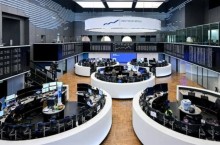CIO en VO : la bourse de Londres bloquée à cause de son réseau informatique
Lundi 8 septembre, le London Stock Exchange (LSE) n'a pu opérer aucune transaction durant une demi-heure à cause d'un problème réseau.
PublicitéThe London Stock Exchange began operating again in its final half hour of the day on September 8, after an unexplained network problem prevented trading for most of the day. Trading started at 4 p.m. after market participants reconnected to the system and activity was allowed to recommence. The failure, which started Monday morning, forced the market to operate in "auction mode," meaning traders could decide prices and agree on sales but not settle trades. Although the exchange opened and ran for the final half hour of the day's trading, there was no explanation of the cause of the technical problems which proved so embarrassing on one of the most important trading days of the year. Traders had been expecting a frantic day's activity as the markets reacted to yesterday's dramatic takeover of U.S. mortgage groups Fannie Mae and Freddie Mac by the U.S. authorities. Instead the LSE, which is facing mounting pressure from rival exchanges, was left with egg on its face. The LSE plans to operate normally on Sept. 9 and the exchange is confident that today's outage was not a problem with its core TradElect system. Analyst firm Tower Group said the exchange should provide a full explanation of the failure. Bob McDowall, research director of analysts Tower Group said: "This is very damaging to the LSE reputation and to London as a financial center for trading equities. "Tower Group would expect the LSE to provide a full non-technical but detailed explanation of the reason for this interruption to all its stakeholders: users, shareholders and investors. The LSE will almost certainly lose competitive advantage to the alternative trading systems (Turquoise/Chi-X) and even other global exchanges." The breakdown occurred just days after the LSE announced plans to improve services as it competes against a range of new entrants into the market. Among LSE initiatives is a move to slash the time to complete a trade from six milliseconds to three as the exchange completes an upgrade of its 14-month old TradElect platform. The exchange has also launched a server hosting service for investment banks to enable traders to reduce network latency and further cut the time to complete a trade. The Exchange Hosting service allows banks to move their servers into the exchange's own data center next to the LSE's TradElect trading platform. This shaves milliseconds off the time it takes to complete trades as it eliminates network latency, the exchange claimed. The exchange has been upgrading TradElect to bolster its capacity and latency. The LSE said: "In September, current capacity on TradElect will initially double to 10,000 continuous messages per second. In October, it will double again to around 20,000 continuous messages a second and end-to-end execution latency on TradElect will be reduced by 50 percent from six milliseconds to three milliseconds." (c) Mike Simons - Computerworld UK - IDG
Article rédigé par
IDG News Service










Commentaire
INFORMATION
Vous devez être connecté à votre compte CIO pour poster un commentaire.
Cliquez ici pour vous connecter
Pas encore inscrit ? s'inscrire